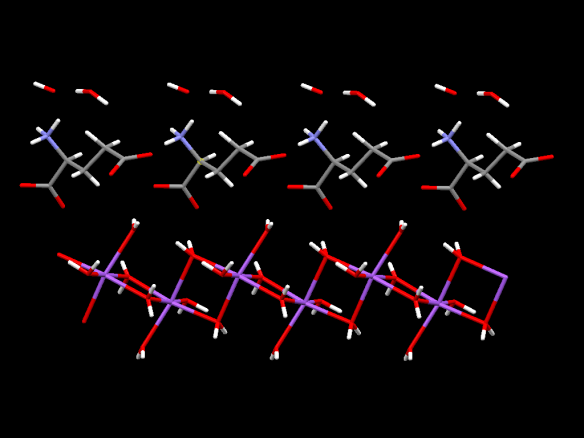Enhancing flavour, molecule by molecule: MSG
What does it look like?

The triple layered structure of MSG pentahydrate. The top layer is water molecules, then the middle layer is the glutamate molecules, and the bottom layer is the complex of water and sodium (purple) atoms.
What is it?
MSG or Monosodium L-glutamate is a salt that forms between the amino acid L-glutamate and one sodium atom. It is extremely popular as a flavour enhancer, thought to confer the taste of umami to food through the amino acid molecule. Though glutamate is a molecule found in most living things on Earth, some people worry that excess consumption of this flavour enhancer can be bad for your health. But many scientists think this fear is unfounded and argue it can be a good substitute for table salt – as it has a much lower sodium content.
Where did the structure come from?
It's thought the the taste of pure solid MSG is not all that pleasant, so we've featured the structure of monosodium L-glutamate pentahydrate – that is, one sodium crystallising with the L-glutamate molecule, each with five water molecules. This structure was found by Kashwagi et al. and was published in Acta Cryst. C in 1995.






